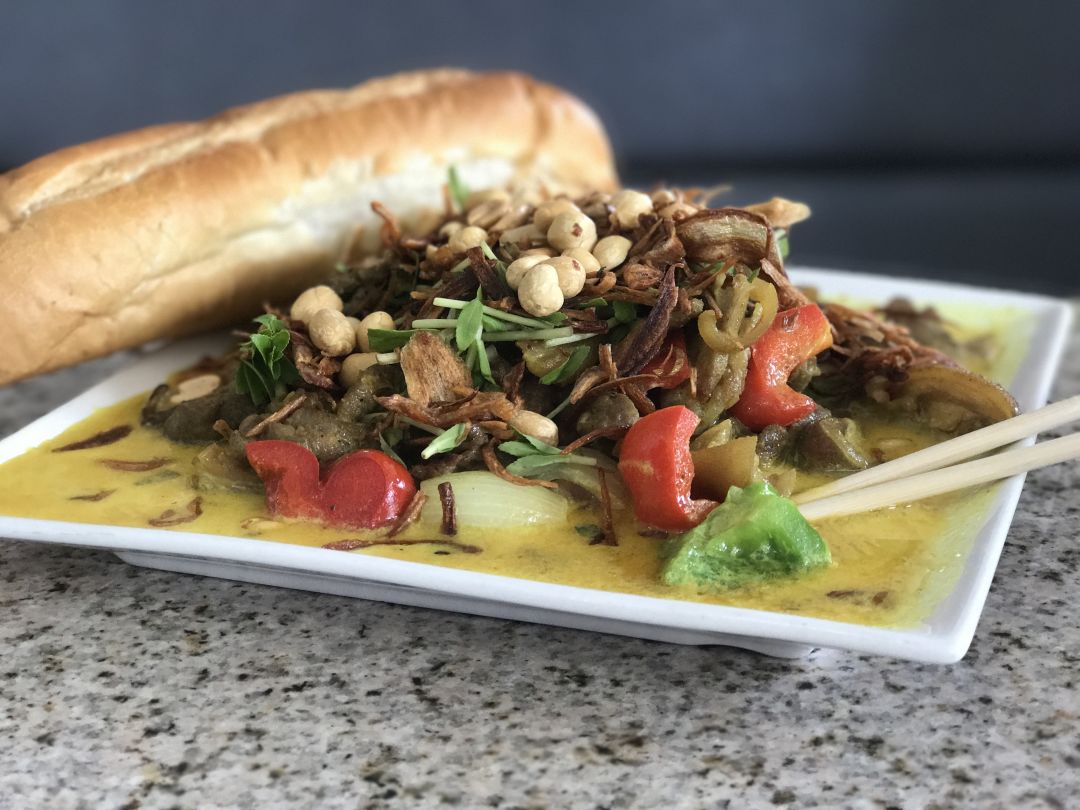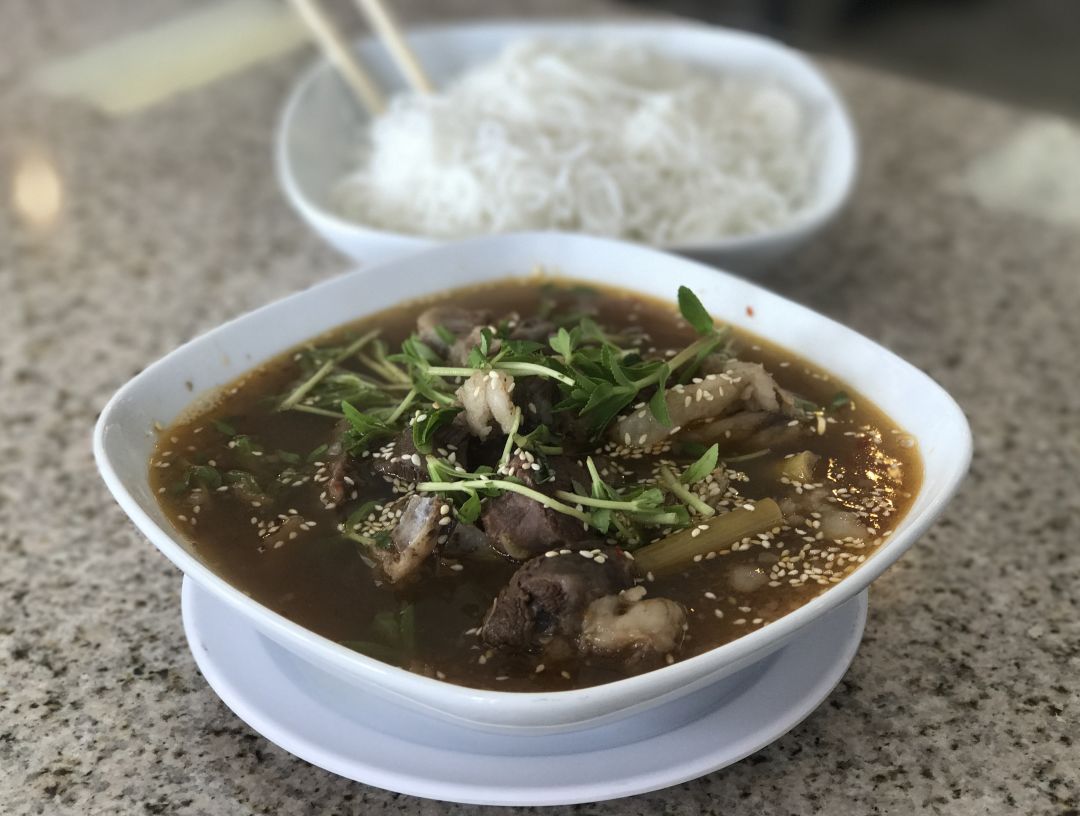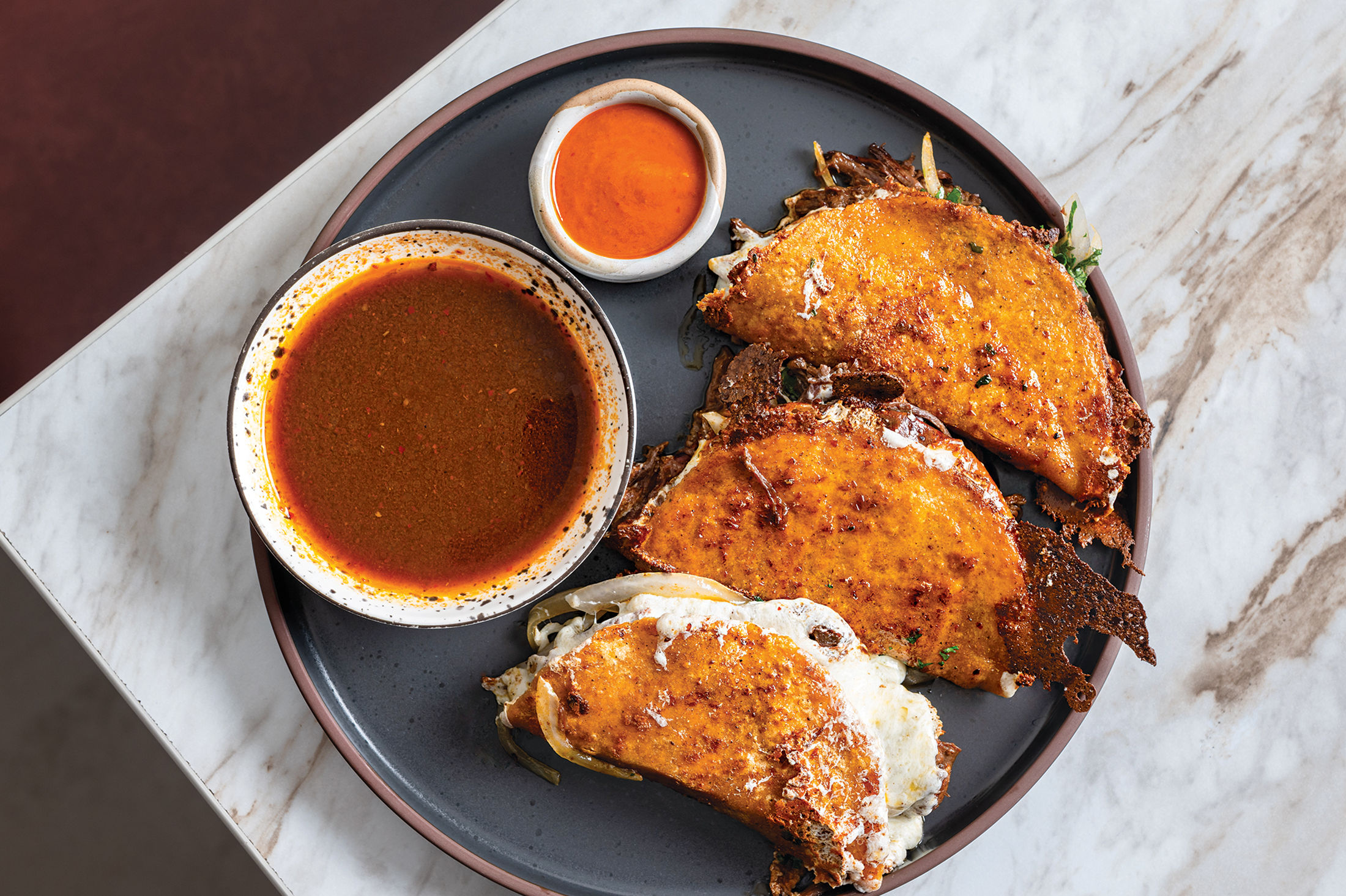Get Your Goat at De Hoang Duy
If you don't eat goat, it may be because of images like this.

Too cute to eat.
Image: Pixabay
Or else, it's their reputation for consuming garbage.
But the truth is, goat is commonly eaten pretty much everywhere in the world but North America. Most Houstonians have had Indian goat curry or chops, Caribbean goat stews and Mexican goat tacos. But despite our preponderance of culinarily diverse Vietnamese restaurants, Viet goat is harder to come by. Unless, of course, you've found yourself watching Giọng hát Việt (Vietnam's version of The Voice) at De Hoang Duy on Veterans Memorial Drive, as I did last week.

De xao lan, $15.
Image: Alice Levitt
De Hoang Duy, on Veterans Memorial Drive, has rice plates, bun bo Hue and bo ne on its menu, but roughly half the bill of fare is filled with goat dishes. And for diners who aren't versed in Vietnamese, it can be confusing to choose between "goat meat delight salad," "steamed goat meat" and "grilled sliced goat meat." Fortunately, we had a very patient server who spoke strong English. She told me that her favorite was the de xao lan, or stir-fried goat.
What quickly emerged from the kitchen was a pile of goat and colorful peppers, mounded with fried shallots and peanuts, resting in a coconut-flavored curry sauce. The only problem for western diners: Some pieces of goat were tooth-tender. Others bounced against our molars with the power of a SuperBall. When it proved too much, we satisfied ourselves with dipping the warm, crusty baguette in the creamy sauce.

De rua man, $15.
Image: Alice Levitt
My dining partner initially balked at the barnyard odor of the de rua man. Fortunately, the sweet-and-sour soup didn't taste like it smelled. The rich, tangy broth served as a hot bath for another motley mix of goat pieces—some fell of the bone at first bite, others remained stubbornly affixed, beyond our gustatory skill set. But as we piled rice noodles into individual bowls to eat with the broth, we made a new favorite culinary discovery.
An herb that looked a bit like tarragon but with jagged leaves, liberally dressed the soup. Its taste: luminous as shiso but with an earthy note not unlike cumin. On further research, this was ngo om, typically known in English (when it is known) as rice paddy herb, for the place it's most commonly grown.
In the end, I left De Hoang Duy with a tiny bag of ngo om to help us learn more about the herb, not with our abundant leftovers. Hopefully someone enjoyed them as much as I enjoyed my new favorite herb.




